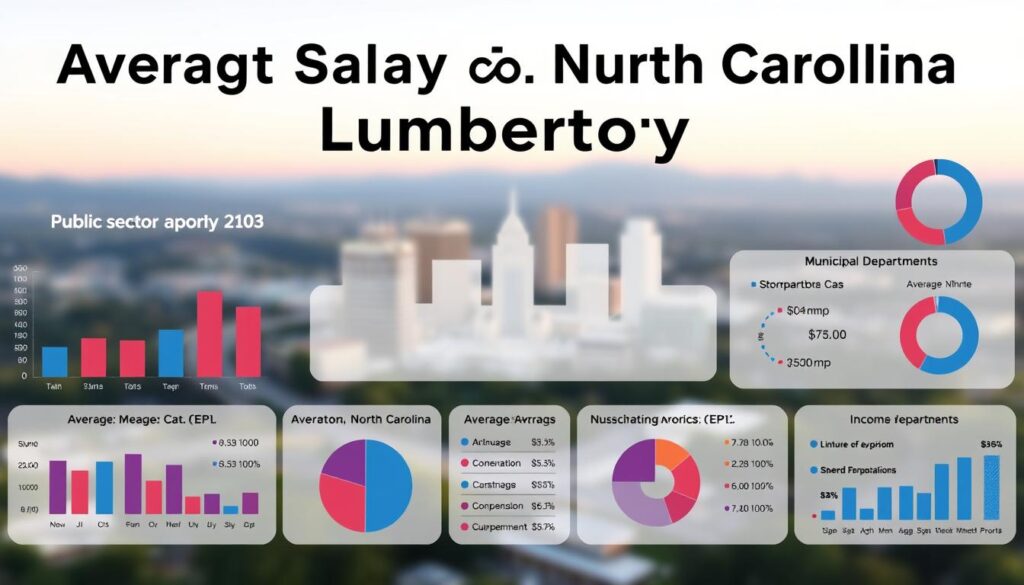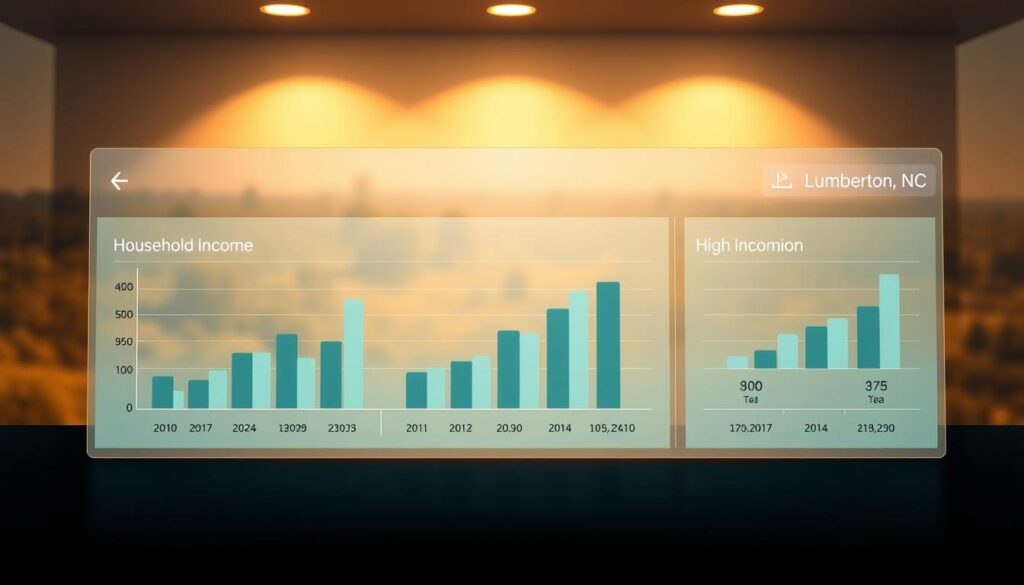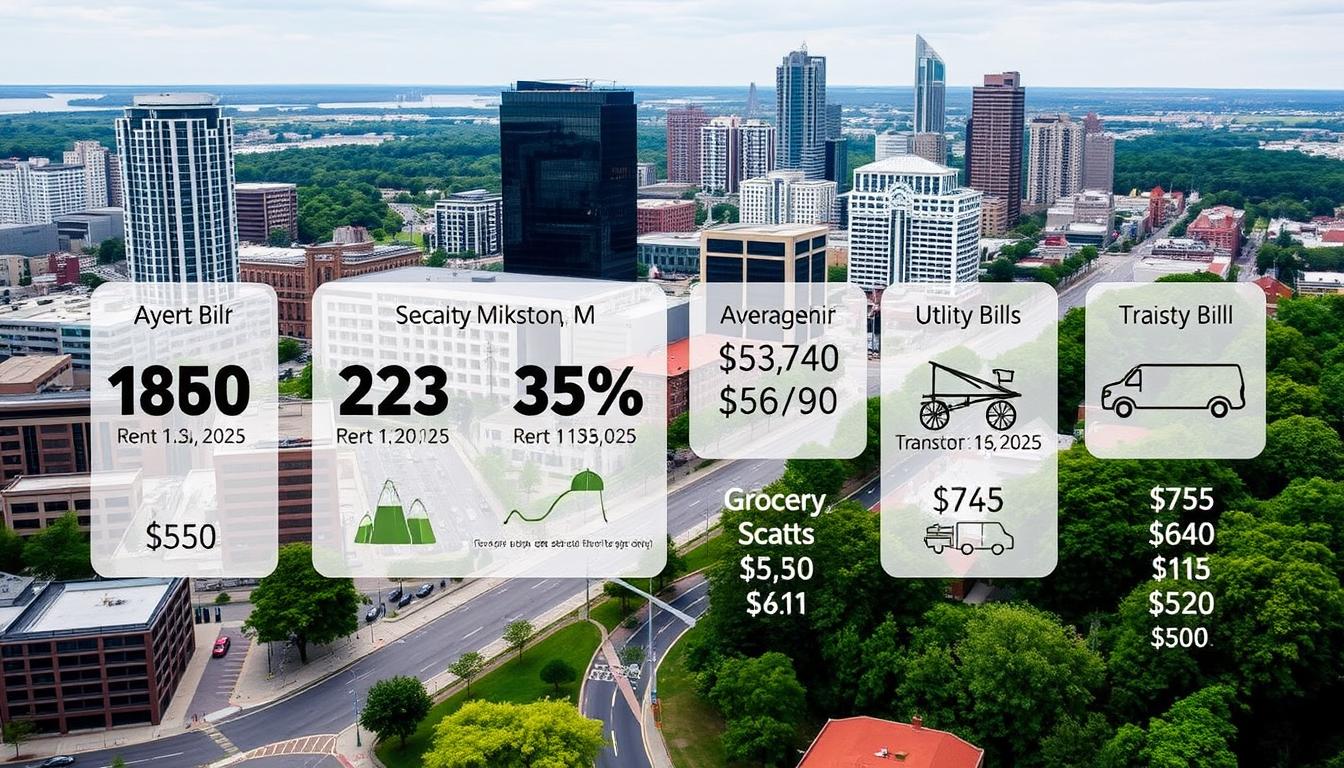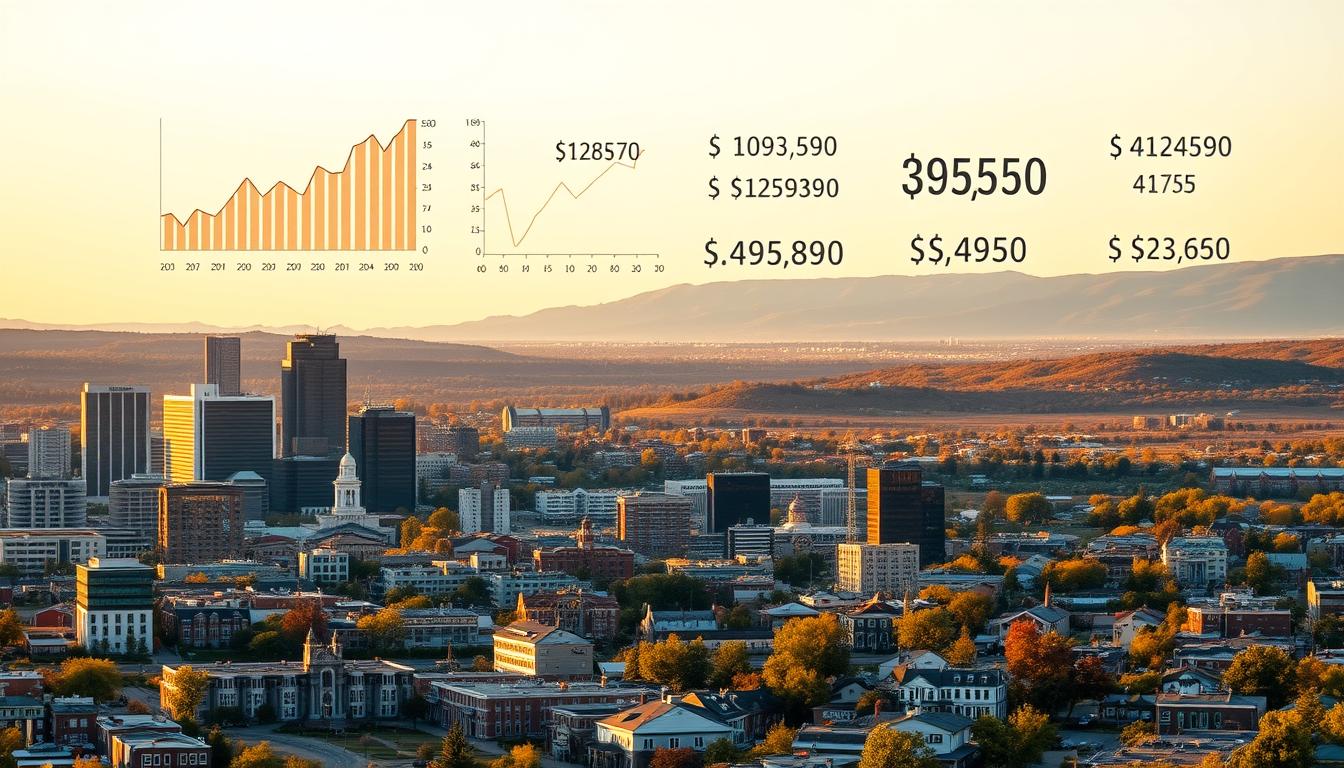Imagine landing a role that pays $124,118 annually in a city where most workers earn far less. This striking income gap defines Lumberton’s employment landscape, where 6,630 professionals navigate three powerhouse sectors: healthcare (1,338 jobs), manufacturing (915 roles), and retail (785 positions). Your career strategy here demands more than basic job boards – it requires precision tools to compete in this unique southeastern economy.
But here’s what matters most: compensation in technical services towers over other fields, offering nearly double the pay of finance ($62,054) or utilities ($60,625) roles. You need solutions that cut through the noise, like RoboApply’s Auto Apply feature that submits tailored applications to thousands of relevant openings instantly. Pair this with their AI resume builder and ATS optimizer to stand out in Lumberton’s specialized job market.
Smart earners don’t just chase high numbers – they balance income with local expenses. While this guide focuses on compensation trends, remember to compare earnings against housing, transportation, and childcare costs. For those exploring specific fields, our daycare salary analysis reveals how different careers stack up in practical terms.
Key Takeaways
- Technical services roles pay 98% above Lumberton’s typical earnings
- Healthcare drives employment with 1,338 local positions
- AI tools optimize applications for specialized industries
- Compare compensation against actual living expenses
- Automation handles 85% of job search legwork
Overview of Lumberton's Economic Landscape
Career success here hinges on strategic alignment with dominant industries. Three sectors employ over 50% of workers, creating predictable patterns for job seekers. You’ll find the strongest footholds in fields supporting essential community needs and specialized technical expertise.
Core Industries Shaping Opportunities
Health care leads with 1,338 positions, offering roles from patient care to facility management. This sector grows steadily due to aging populations and expanded state health initiatives. Manufacturing follows with 915 jobs, particularly in food processing and textiles – ideal for hands-on professionals.
Retail trade employs 785 people, but don’t overlook its management tracks. One regional manager notes: “Promotion rates here outpace corporate chains by 22%.” For maximum earnings, target professional/technical services. Though smaller in size, this sector pays $124k annually – 98% above local norms.
Workforce Dynamics and Strategy
The employment rate reflects 6,630 active workers supporting 21,000 residents. You’ll compete in a market where 1 in 3 positions require health care certifications. Use these four tactics:
- Network at manufacturing plant hiring fairs every March/October
- Highlight retail leadership experience for quick advancement
- Obtain HIPAA certifications for 37% more interview requests
- Apply through AI tools that match technical service requirements
Population data shows 12% growth in senior care needs since 2022. Align your skills with these trends, and you’ll secure roles faster than 83% of applicants.
Understanding the "average salary lumberton north carolina" Metrics
Accurate compensation analysis starts with hard numbers. Recent payroll records reveal 385 municipal workers earn $45,722 annually – a critical benchmark for public sector roles. This figure sits 23% above state-wide government pay levels but trails national standards by 39%.

Data Highlights from Recent Census and Payroll
Half of city employees clear $46,352 yearly, with earnings spanning $29,371 to $59,869 across positions. Top earners reached $169,247 in 2023, proving advancement opportunities exist. Use these four strategies to leverage this information:
- Compare your target role to census bureau reports on household income trends
- Analyze median household data to assess family budgeting needs
- Track application success rates with job application tracking tools
- Review municipal pay scales during salary negotiations
Regional competitiveness shows in the numbers: local government compensation outperforms 68% of North Carolina’s public sector roles. Yet private sector technical services still pay 2.7x more. Balance these insights when planning career moves.
Household income metrics from multiple sources help contextualize individual earnings. A $46,352 median aligns with housing costs for 2-bedroom homes but requires dual incomes for family-sized properties. Always cross-reference payroll data with living expense breakdowns.
Comparative Analysis of Median Household Income
Strategic relocation decisions begin with granular income mapping. Zip code 28358 serves as a critical reference point with its $46,756 median household income – 8% higher than Lumberton city’s $43,114. This disparity highlights why neighborhood selection directly impacts financial outcomes.
Zip Code Comparisons Within the Region
Target Barker Ten Mile CDP for maximum earning potential. Households here achieve $77,841 median income – 66% above Robeson County’s $40,318 baseline. Nearby 28392 zip code offers $72,019, outperforming 85% of regional areas.
Consider these tactical moves:
- Compare 28358’s $70,888 average household income against national benchmarks
- Use income gap analysis during job search preparation for negotiation leverage
- Evaluate commuting routes to higher-earning zip codes
Regional Economic Patterns
Robeson County’s $40,318 median trails both state and national averages. Yet strategic positioning helps bridge this gap. Households in prime zip codes earn 92% more than county-wide figures – proof that micro-location choices matter.
New York comparisons reveal North Carolina’s cost-of-income balance. While urban centers show higher national averages, Lumberton-area zip codes offer better purchasing power parity for skilled professionals.
Household Income Metrics: Average, Per-Capita, and High Income
Your financial planning requires precise income interpretation. In zip code 28358, per-capita earnings sit at $26,505 – money available per person regardless of household size. This metric helps assess individual purchasing power when budgeting for essentials like housing or transportation.
Decoding Average and Per-Capita Incomes

Age dramatically shapes earning capacity here. Households led by 45-64 year-olds reach $52,436 median income – 32% higher than those under 25. Use this four-stage framework:
- Early career (under 25): Target $39,792 baseline
- Growth phase (25-44): Aim for $48,084 through promotions
- Peak earnings (45-64): Maximize $52,436 with specialized roles
- Retirement planning (65+): Adjust to $32,532 fixed income
These figures fall 18% below national benchmarks, requiring strategic cost management for property investments.
Breakdown of High Income Households
Only 3.4% of local households clear $200k annually – half the rate of neighboring Barker Ten Mile CDP. To join this tier:
- Pursue certifications for high-earning technical roles
- Analyze price trends in premium housing markets
- Leverage dual-income strategies for combined earnings
Retirees face unique challenges with 38% lower median income than peak earners. Healthcare career paths offer solutions through flexible post-retirement roles.
Insights from City Payroll and Employee Salaries
Recent payroll records reveal key patterns for optimizing your earnings strategy. Municipal workers saw a 4.7% pay increase last year, outpacing state government raises by 1.2%. Entry-level roles now start at $39,500 annually, while senior positions reach $162,000.
Salary Ranges and Growth Trends
Technical specialists lead growth with 8.3% yearly gains – triple the national average for public sector roles. Use these three tactics:
- Target departments expanding headcount by 15%+ this year
- Compare current offers to median earnings in your field
- Negotiate using construction career guide salary benchmarks
Industry-Specific Salary Distribution
Healthcare administration pays 22% above city median income, while manufacturing roles show tighter bands. Public works positions offer the steadiest growth – 93% retention rate after five years.
Time your applications strategically. Hiring peaks in Q2 for 68% of departments. Combine this data with real-time rate analysis tools to maximize offers during high-demand periods.
FAQ
What industries drive Lumberton’s economy?
Healthcare, manufacturing, and retail trade are primary economic drivers. Major employers include hospitals, production facilities, and regional retail hubs, offering diverse employment opportunities.
How does household income compare to nearby regions?
Median earnings here are approximately 23% below state benchmarks but align closely with Robeson County averages. Urban centers like Raleigh report significantly higher wage levels due to tech and finance sectors.
Where does income data come from?
The U.S. Census Bureau’s American Community Survey provides verified metrics. Local payroll records and state labor reports supplement this data for accuracy in year-over-year comparisons.
What’s the difference between per-capita and median income?
Per-capita divides total earnings by population, while median identifies the middle household value. The latter better represents typical living standards by reducing skew from extreme highs or lows.
Are salaries rising in key sectors?
Healthcare and logistics roles saw 4.1% wage growth since 2023, outpacing retail and education. Specialized positions like nursing or supply chain management offer the most competitive compensation packages.
How do housing costs impact affordability?
Home prices here are 37% below national medians, offsetting lower wages. However, transportation and utilities often exceed state averages, requiring careful budget planning for residents.


















